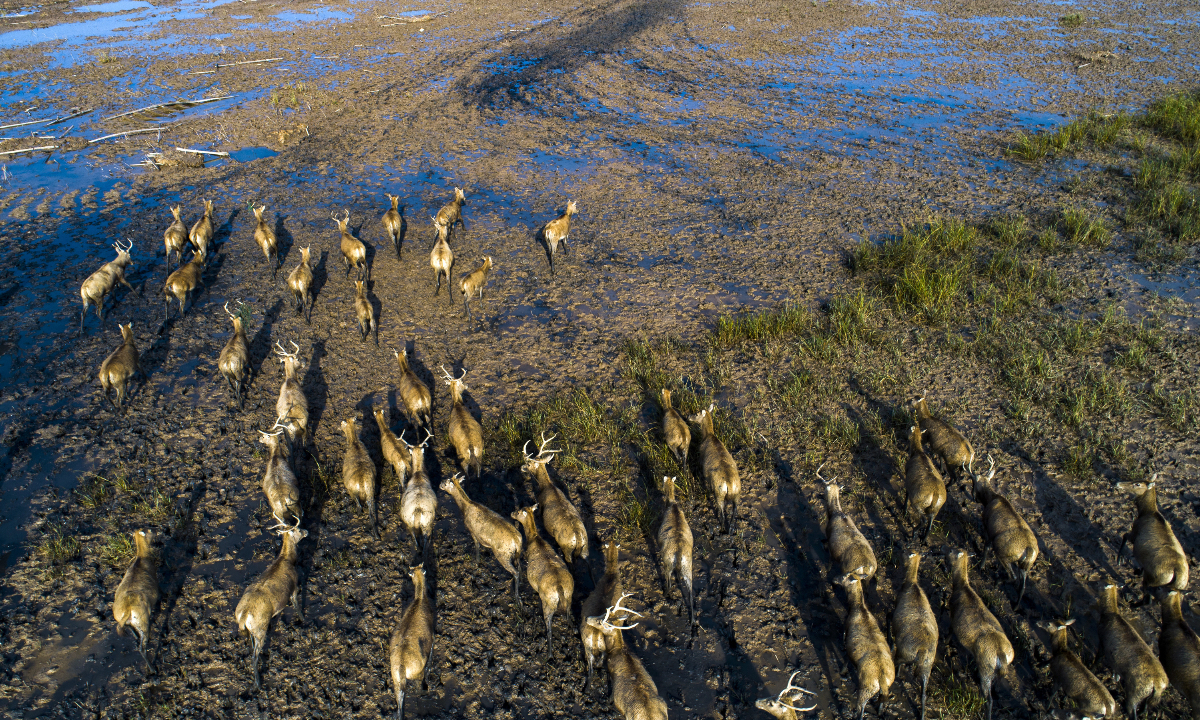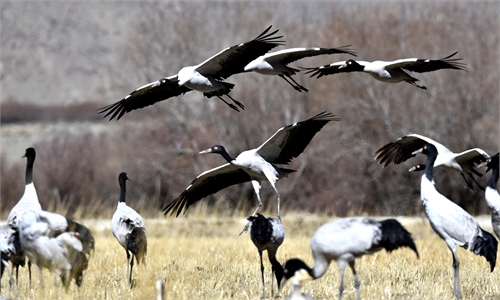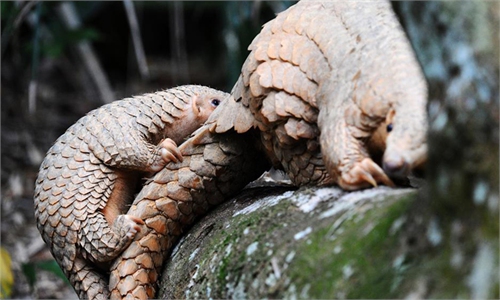China releases the first list of 789 important habitats for terrestrial wildlife animals to strengthen protection

Wild elk herds roam the Jiangsu Province Dafeng Milu National Nature Reserve in Yancheng city, East China’s Jiangsu Province. Photo: IC
China has recently released the first list of 789 important habitats for terrestrial wildlife animals in a bid to strengthen the protection of terrestrial wildlife populations and their habitats. The list covers 82.36 percent national key protected terrestrial wildlife species, according to China’s National Forestry and Grassland Administration (NFGA).
Based on the importance of the terrestrial wildlife species in China, their population sizes, the significance of their habitat locations, and their special representativeness, the first list of important habitats for terrestrial wildlife is divided into six categories, including the survival and breeding area for rare and endangered species, as well as the distribution areas for wildlife clusters.
These areas are spread across 31 provinces, regions and municipalities, covering the habitats, breeding grounds and migratory sites of 565 species of the national first- and second-class key protected wildlife animals including 127 mammal species, 339 bird species, 62 amphibian and reptile species, and 37 insect species.
According to the requirements under China’s Wildlife Protection Law that strengthens the protection of important wildlife habitats, the NFGA organized experts to collect the information and data of China’s wildlife resources obtained from the surveys conducted over the past two decades.
The experts classified and sorted out the characteristics of the species’ natural distributions, population dynamics, and biological habits of the wildlife animals in China, and formulated the interim measures for the identification of important habitats for terrestrial wildlife animals. The interim measures determine the technical specifications for identification criteria, assessment procedures, file information, demarcation of scope and naming rules for important habitats of terrestrial wildlife.
Through detailed analysis and evaluation, the first batch of important habitats for terrestrial wildlife was selected. Moving forward, the NFGA will further strengthen investigation, monitoring and assessment of areas where habitat conditions have continued to improve but have not been included in the list, and successively include those meet the relevant criteria into the list.
In recent years, China has established a natural protected area system focused on the country’s national parks using nature reserves as its foundation and various natural parks as secondary sites.
This system has incorporated a large number of wildlife habitats into protected areas, ensuring the protection of wildlife habitats and promoting their continuous optimization. It has played a significant role in rescuing precious endangered wildlife and maintaining the development of wildlife populations.
Global Times




